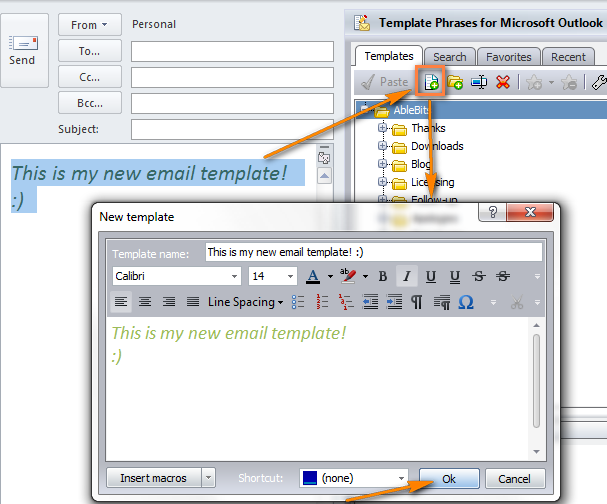

- #How to create templates in word 2016 how to#
- #How to create templates in word 2016 full#
- #How to create templates in word 2016 download#
Click Insert > Photo > Picture from File. Now some guidelines for headers and footers will show up on the document. Your letterhead design is going to be placed into the Header and Footer section of your Word document, which will automatically repeat on all additional pages. Place your letterhead design into your Microsoft Word document

#How to create templates in word 2016 full#
Set the paper size to 8.75 x 11.13 to accommodate your full bleed design, set all the margins to “0”, and set the Non-Printable Areas to “User Defined.” Doing this lets you set up your letterhead as a full bleed instead of conforming to Word’s default margins. While the document opens, click File > Page Setup > Paper Size > Manage Custom Sizes. Next, set up a Word document to insert your letterhead design into. You can also save your design as a JPG and even as a TIFF however TIFF files will dramatically increase files size and loading times in Microsoft Word for your client. Make sure you select 300 ppi as the resolution. Export your letterhead design as a high res PNG file
#How to create templates in word 2016 download#
There’s a great full-bleed letterhead template that you can download here. We’re using a full bleed design in this example with a 1/8″ bleed, which will give s us a document that is about 8.63 x 11.13 inches.Ĭreate your design in CMYK color mode, and if you’re using photos or complex graphics make sure that they 300ppi or higher, because Microsoft Word compresses all images that you place into it. We’ve created this example in Illustrator, but Photoshop and InDesign can be used to create letterhead designs too.
#How to create templates in word 2016 how to#
Microsoft Word is pretty low-tech compared to Illustrator or InDesign however, that’s what your clients are using and your letterhead design is useless to them if they can’t edit and add content to it, so knowing how to create a Microsoft Word letterhead template is key.

Our merged document will show nothing (""), since that is our FalseValue. Now let's say we use a different Opportunity called Merge Republic, which only has an amount of $8,000.

We are showing the value of the OPPORTUNITY_SERVICE_PACKAGE field since that is our TrueValue. Once we merge the Composer template that uses our IF statement, our merged document will look like this: The Merge Nation Opportunity has an amount of $25,000. Using the IF statement we just created, let’s consider an example: When we toggle the field codes closed, the IF statement will revert to the Word merge field with the placeholder name: This text needs to be removed to ensure the IF statement renders consistently. When initially creating the IF statement, Word will include the following text at the end: \* MERGEFORMAT. Following are examples of both types of syntax.Īn IF statement that is toggled open should look exactly like the examples above when it is completed. This means that all the fields inside or around the IF statement can be either Word or text-based merge fields, but again, the IF statement itself must be a Word merge field. IF statements can use Word merge fields or text-based merge fields, with one exception: the IF statement itself must be a Word merge field.


 0 kommentar(er)
0 kommentar(er)
